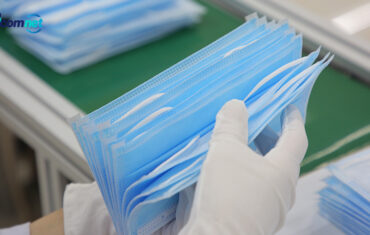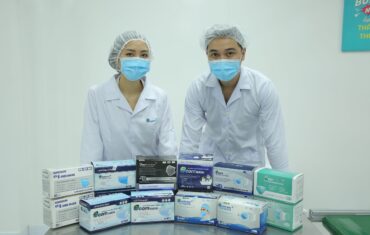The 3 ply surgical mask has become the most sought-after commodity during the Covid-19 pandemic, with many buying what they can get their hands on. However, the quality of different brands may vary wildly, though the masks may look the same.
How do you tell if a 3 ply mask is real or fake? Check it out below!
Tips To Test
1. Visual Test
If you cut open your mask, you should see a very obvious 3-layers. The 3 layers would typically consist of an outer hydrophobic non-woven layer (translucent), middle melt-blown layer (white), and an inner soft absorbent non-woven layer (green, blue, or white).
If you don’t have those 3 layers, then it is not a 3 ply mask.
2. Non-flammability Test
The middle layer of a surgical mask is a melt-blown fabric, not made with paper, therefore, if you light it with a flame, it will not burn like paper. Instead, it melts without flame.
If your mask catches fire, then it is not a 3 ply surgical mask.
3. Water-resistant Test
The outer-most layer is designed to be waterproof. Pour some water onto the outer layer and you should be able to see that the mask repels water properly.
If the other side gets damp, it is not a 3 ply mask.
4. Electrostatic Adsorption Test
There is an electrostatic effect in the melt-blown layer. If you tear the melt-blown layer into strips, you will feel the electrostatic adsorption effect, and you can also adsorb the melt-blown layer on stainless steel due to its large amount of electric charge.
If your mask does not electrostatically adsorb any strips, it is not a 3 ply surgical mask.
5. Light Transmission Test
The middle layer, which is used to trap bacteria from entering or exiting the mask, should not be too porous. This will ensure the mask can catch the percentage of bacteria it’s supposed to.
If your mask’s middle layer is too porous, it is not a 3 ply surgical mask.
6. Breath Test
3-ply surgical mask is designed with a middle melt-blown layer that is critical as a filter to contain droplets by electrostatically adsorbing them on the surface hence it cannot infiltrate the mask; while the inner layer is intended to absorb water, sweat and spit. This will ensure extinguishing fire with your breath is highly impossible.
If you can extinguish a fire easily with your breath while wearing the mask, it is not a 3 ply mask.
7. Absorbency Test
The innermost layer is designed to absorb moisture such as saliva, mucus and sneeze droplets. This ensures when a user sneezes, the mask will be able to contain the droplets, which will not remain smeared on the wearer’s face.
If your mask’s inner layer is not water-absorbent, it is not a proper 3 ply surgical mask.






